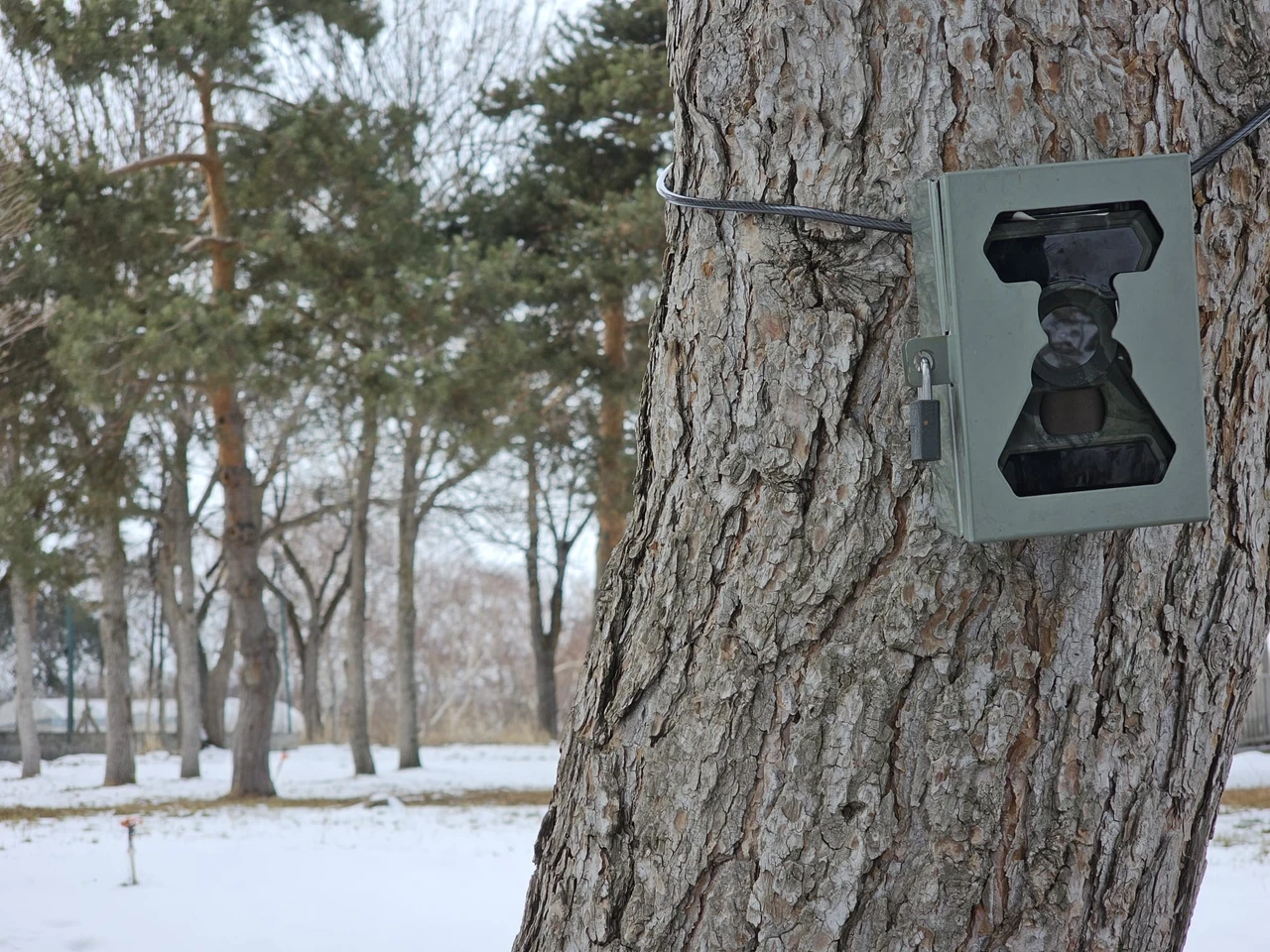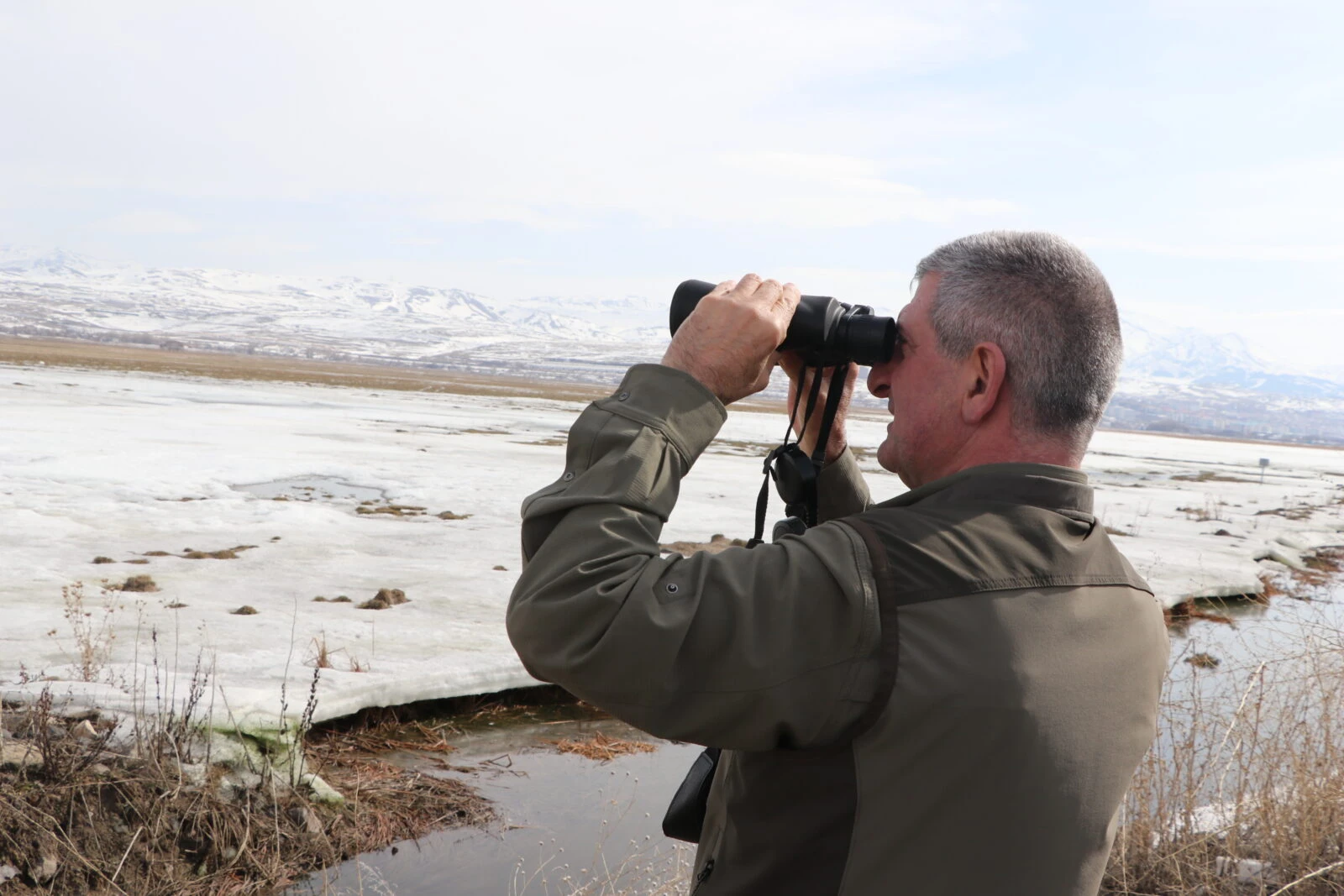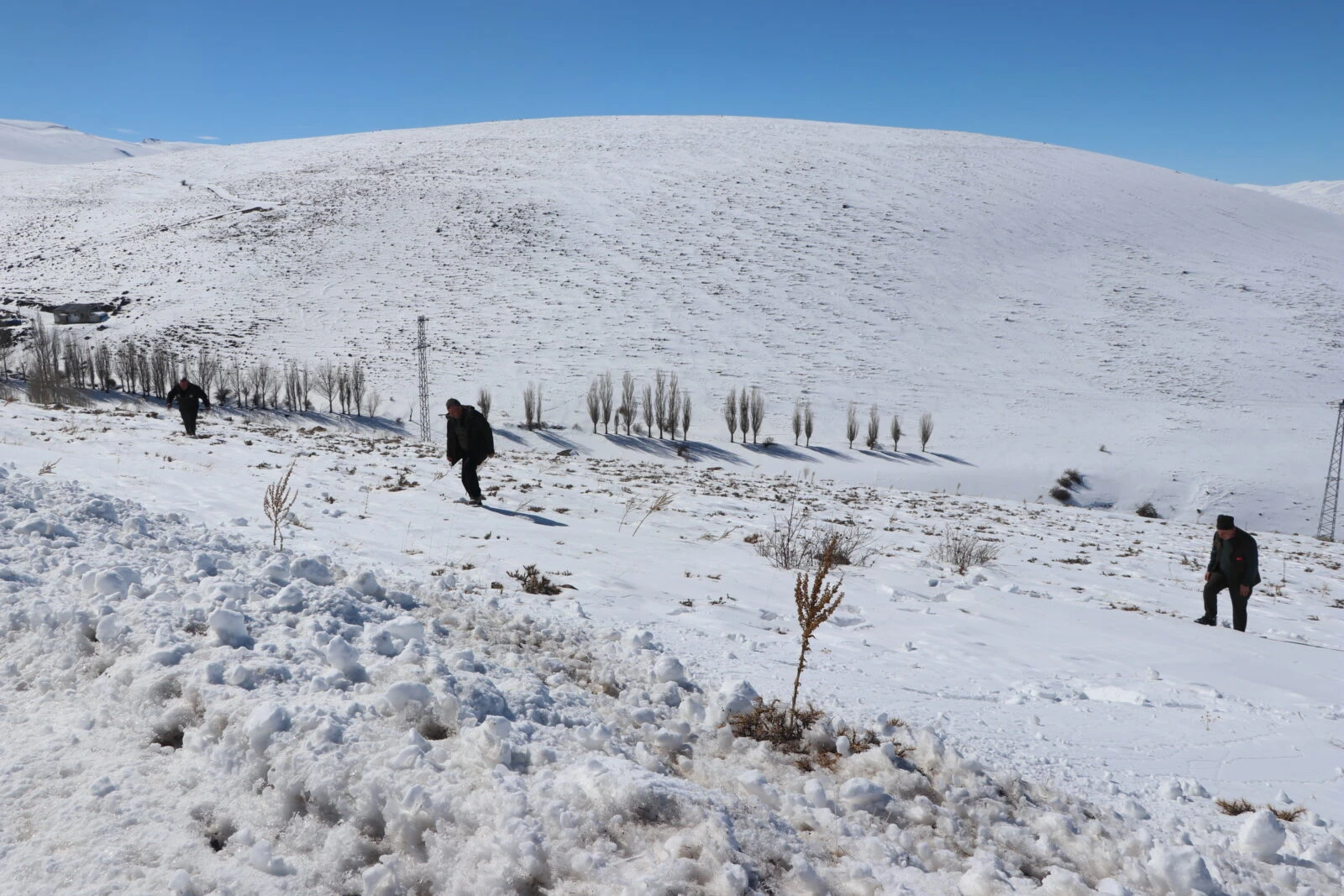Poachers no longer have a chance with trail cameras, drones in Türkiye’s protected areas
 A trail camera in the responsibility area of the 13th Regional Directorate of Nature Conservation and National Parks. (AA Photo)
A trail camera in the responsibility area of the 13th Regional Directorate of Nature Conservation and National Parks. (AA Photo)
The use of 147 trail cameras and eight drones in Türkiye’s 13th Regional Directorate of Nature Conservation and National Parks’ jurisdiction across eight provinces has led to a significant reduction in poaching activities and an increase in the population of wild animals.
Tech innovation safeguards wildlife in remote areas
In the rural regions of Erzurum, Kars, Igdir, Ardahan, Bayburt, Erzincan, Bingol, and Agri, 147 trail cameras and eight drones are enhancing wildlife monitoring and conservation efforts.
The technologies are crucial for preserving species and tracking animal populations, providing invaluable support for inventory assessments.

Increasing wild animal populations amid stronger enforcement
Despite the region’s thick snow cover, which can exceed 1 meter, conservation officers have successfully implemented surveillance and enforcement measures.
These efforts led to the identification of 529 individuals engaging in illegal hunting activities, all of whom were fined during the 2024-2025 period.
Trail cameras and drones making poachers think twice
With the aid of motion-sensitive cameras, a variety of species such as wild goats, bezoar ibex, wild boar, foxes, bears, wolves, and lynxes are regularly captured in their natural habitats.
The combined use of trail cameras and drones has been described as a “nightmare” for poachers, contributing to an increase in wild animal populations and a noticeable decline in poaching activities.
Akif Umuzer, the Director of the 13th Regional Directorate, emphasized the positive impact of these technological tools in preventing poaching. He noted that those caught on camera without permits face penalties.
“In our inventory surveys, we observed an increase in the populations of wild goats and bezoar ibex,” he explained. The most recent census recorded 5,323 wild goats and 1,441 bezoar ibex in the area.
Umuzer also noted that the deterrent effect of fines and the innovative use of technology in wildlife monitoring have led to the observed rise in animal numbers. “The use of these tools has made our poaching prevention efforts more effective and has deterred many poachers,” he added.
Rising numbers of wild goats and bezoar ibex
Thanks to the strategic placement of trail cameras, the directorate also noted a marked increase in the populations of wild goats and bezoar ibex.
“These improvements are promising for both wildlife and poaching prevention,” Umuzer remarked.
Despite ongoing challenges, Umuzer is confident that while poaching may not be entirely eradicated, significant progress has been made.
“Although we haven’t fully eradicated poaching, its rate has drastically decreased, thanks to strict monitoring and increased fines,” he said. The cooperation of local authorities and community involvement, especially on weekends and holidays, has proven essential in curbing poaching activities.

Effective collaboration between authorities and citizens
In addition to fines, violators are required to pay substantial compensation fees. A fine of $17,150 per animal is imposed for poaching wild goats, reflecting the seriousness of the consequences.
Nebi Dogan, director of the Erzurum Directorate, shared similar insights regarding poaching in the region. This season, 156 individuals were fined out of 12,000 individuals monitored, with a total fine of $45,480 imposed in Erzurum alone.
Dogan expressed gratitude to citizens and security forces for their continued support, noting that trail cameras and drones have significantly improved the efficiency of law enforcement. “Using technology has allowed us to identify poachers more effectively, and the overall number of offenders has decreased,” he said. Moreover, Dogan mentioned that citizens and local officials are receiving education on protecting nature and wildlife, fostering further community involvement.



